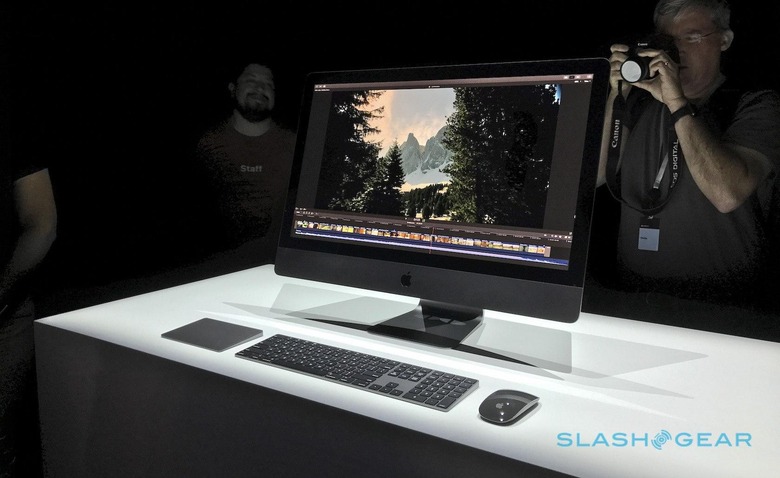iMac Pro Still Doesn't Give The One Thing Pros Want
Apple's WWDC's keynote was filled with unusual stuff. Contrary to previous practices, Apple announced new devices at WWDC this year. Not only that, it revealed an unexpected iMac Pro. And to top it all off, it is making it available in an unprecedented Space Gray color. That, however, comes at a very high-price of $4,999. That's a price not many professionals will be able to afford or even be willing to pay, especially for a Pro computing device that still doesn't give what they've been begging Apple for: flexibility.
The iMac Pro is a beast, no doubt about that. It eclipses even the Mac Pro which is nominally Apple's top of the line desktop. The specs definitely scream "pro", with an 18-core Intel Xeon processor you'd normally only see in servers or heavy-duty workstations. It makes use of ECC-type memory, a more resilient form of memory. It also utilizes AMD's new premium Radeon Vega graphics that boasts of 16 GB of video RAM.
But while Apple did seem to have gone overboard with the specs, the professionals for whom the iMac Pro was made seem to be on the fence about it after the initial shock has worn off. Because while the all-in-one computer may offer a lot of power, it still lacks the kind of flexibility that professional workers seem to always be in need of: the flexibility to upgrade their computers.

Buying a Mac has always been an all or nothing deal. You get what you pay for and nothing more. If someday you decide you need more than that, or if you finally have the budget to get more than that, you're out of luck. You'll need to buy the exact model with the specifications you want.
That has always been true for the MacBooks naturally as well as the Mac Pro. The iMacs, however, have user upgradeable memory, so it's ironic that its Pro version wouldn't. The iMac Pro might support up to a whopping 128 GB of ECC memory, but the price does start with only 32 GB. If you buy that configuration, you're forever stuck with it until you buy a different model. That is also true for storage, though some have found ways, unofficial of course, to get around that.
Apple does make one concession, somewhat. It has announced support for external graphics amplifiers, those hulking boxes that can give MacBooks capabilities they can only dream of. How that will fit in with the iMac Pro and its relatively new Radeon Vega, or whether it will be needed at all, is something we'll have to review for ourselves. It's a workaround at best and doesn't really address the very closed nature of Apple's computers.

Professionals, or even consumers, rarely buy computers with full knowledge of the capabilities they'll need down the road. They could simply go broke aiming for the highest, only to find out later on that it was overkill. And even if they could have predicted what they really needed, technology moves at a much faster pace than we can keep up with. And if you're working in a field even remotely related to computers and technology, you need to be able to keep up.
The beauty of PCs is in its diversity, allowing users to spend on what they need now, with the assurance that they can always upgrade to something they need in the future. But it also a fragmented mess that is completely antithetical to Apple's tight control over both its hardware and its software. So while Apple is offering its most powerful Mac ever, it is also asking buyers to make their most expensive gamble ever.

